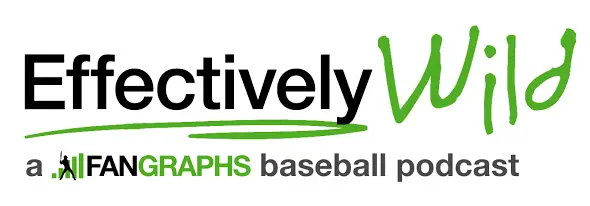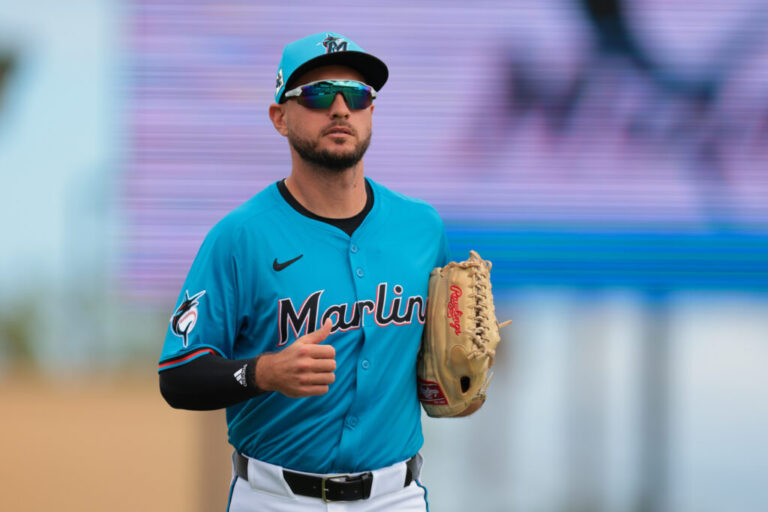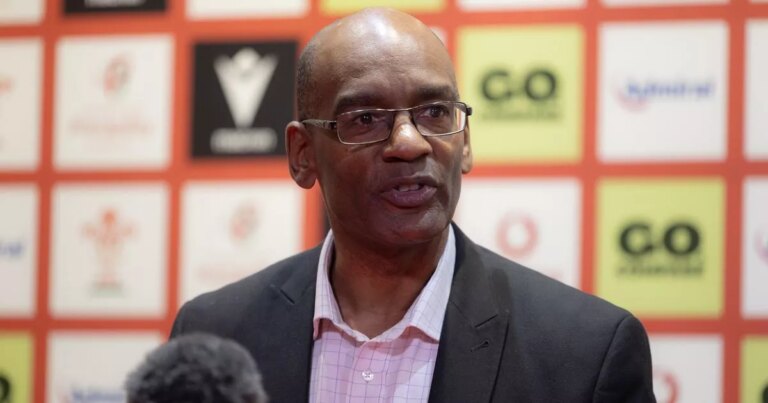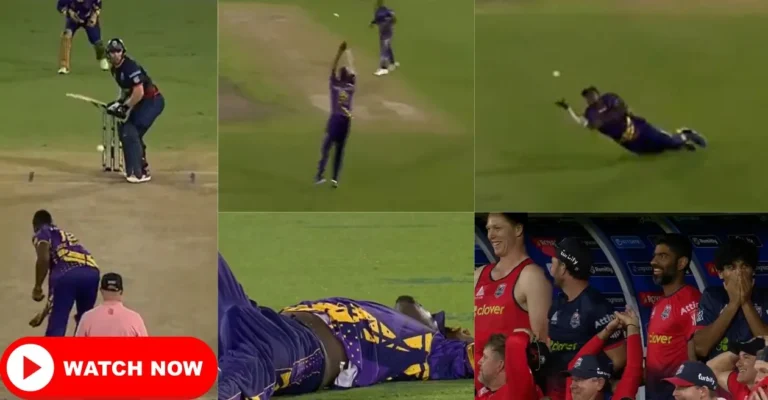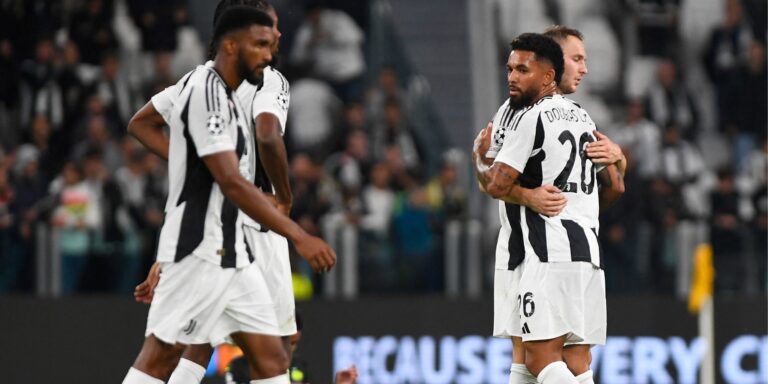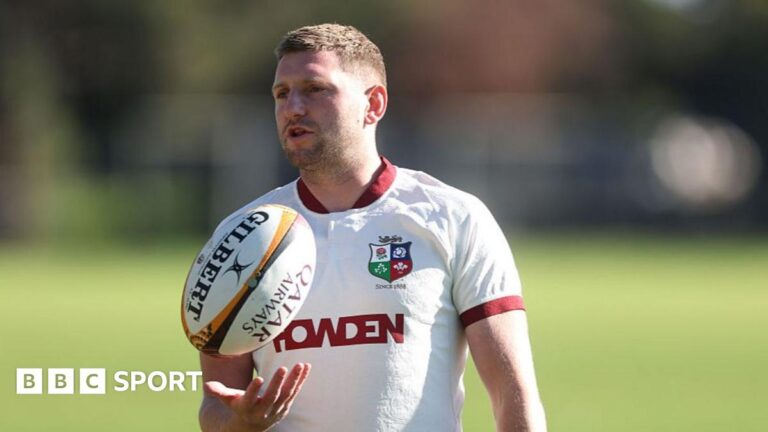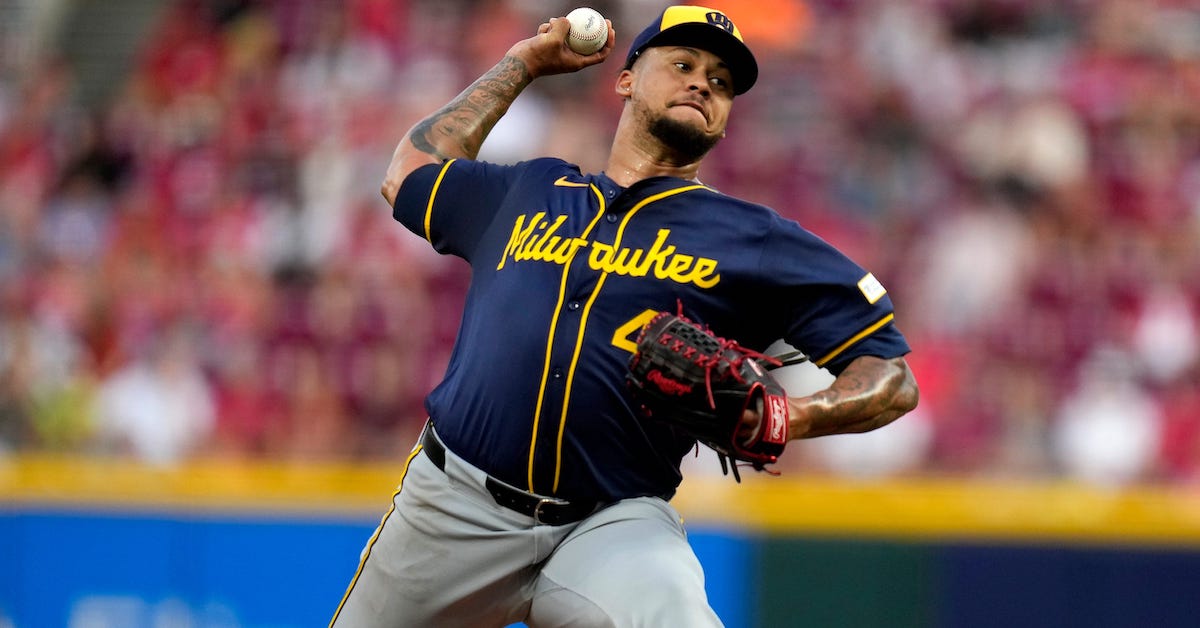

Last offseason, the Mets got in early on the starting pitching market. They signed Luis Severino in late November, later pairing him with Sean Manaea atop their rotation. Both deals were modest and short term, essentially chances for the players to rebuild their résumés while pitching for a playoff contender. And that’s exactly what happened. So now, with Severino and Manaea in line for larger paydays, the circle of life restarts: The Mets have signed Frankie Montas to a two-year, $34 million deal with an opt out after the first year.
At surface level, Montas doesn’t seem like a blockbuster signing. He just posted a 4.84 ERA (and 4.71 FIP, this wasn’t some weird BABIP issue) in his first year back after missing most of 2023 due to a shoulder injury. He’s about to turn 32. His last excellent season was in 2021. The list of drawbacks is lengthy.
Ah, but “knowing which drawbacks to overlook” might be David Stearns’ superpower. Manaea was coming off of two straight abysmal seasons when he signed in New York, and Severino hadn’t been great since 2018. But both had the capability to excel – they already had in their careers, and not in a fluky way. The right surroundings, the right defense, a pinch of luck here and there: It wasn’t hard to see how those two deals could work out. Likewise, Montas might have been down in 2024, but I have no trouble talking myself into an improved 2025.
Montas has never been a pure bat-missing strikeout machine. When he was at his best in Oakland, he did everything just well enough for the total package to work. He struck out more batters than average, walked fewer than average, kept the ball in the ballpark, and went six or so innings a start. No one would mistake him for Cy Young, but doing a bunch of things well added up to an ERA in the mid-3s. That’s a clear playoff starter, exactly what the Mets need.
The version of Montas that Cincinnati got in 2024 was nothing like the Oakland one. As you might expect from someone coming off a completely lost season, his command was scattershot. His fastball lost its customary ride, thanks in part to a lower release point. He worked from behind too often and got into jams frequently. That’s not unheard of for good pitchers returning from long layoffs, but it was enough for the Reds to ship him off to Milwaukee at the trade deadline.
Luckily, Montas improved as the season wore on. Four-seamer isn’t working like it used to? No big deal. He increasingly turned to his sinker against right-handed batters. The new arm angle works well with a sinker/slider approach, and Montas also throws a sharp cutter that sits between the two and makes pitch recognition tougher.
Against lefties, Montas leaned on the pitch that helped him break out in the first place: a splitter that eats opposite-handed hitters alive. He’s never been particularly good at landing the splitter for a strike, but it’s the kind of pitch that generates either a whiff or a ball almost every time he throws it. Mix in some four-seamers and cutters, and you’ve got a three-pitch mix that gives you a shot at getting lefties out – at least in theory.
In reality, lefty batters are still a weakness for him. His splitter is nice and all, but it’s an out pitch, not a foundational offering. His four-seamer’s new, diminished shape isn’t scaring anyone. His cutter doesn’t work quite as well when it’s not blending with a bigger slider. Lefties crushed Montas last year; they launched 16 homers in 341 plate appearances, with grim peripheral statistics to boot.
Platoon splits are notoriously noisy in one-year samples, but this one doesn’t feel like a fluke. A lower release point and revamped pitch mix have changed Montas’s approach against righties for the better. The same changes to his game have made it tougher to get lefties out. But a few tweaks to his plan against opposite-handed batters could make the whole thing work out quite well.
That wipeout splitter? It’s more or less useless when Montas falls behind in the count. Some early strikes would alter the balance of power there significantly, and I expect that to be a focus for him this season. Another year’s distance from shoulder surgery should help on this front; plenty of pitchers look a little sloppy as they get their feet back under themselves, and Montas has demonstrated the ability to get ahead and stay ahead in years past.
That’s the nitty gritty of the signing. Now for the broad strokes. The Mets are going to be spending a ton of money this offseason one way or another. They have holes to fill and cash to spend now that nine figures worth of salary has come off their books after the 2024 season. Montas isn’t going to be the most prominent free agent they sign — Mets fans surely hope they’ll get Juan Soto, perhaps with a side of Corbin Burnes — but either way, he could end up being an important piece of next year’s team. New York probably wants to add two or three starters behind Kodai Senga this offseason; Montas is merely the first one to sign. The Mets still have space to get an ace and another innings eater, and with Montas in tow, the next innings eater they sign doesn’t necessarily have to be someone they’d want for their playoff rotation.
Montas got more than I projected for him, which brings me to my next takeaway: The market for starting pitchers is hot right now. So far, five of this offseason’s six multi-year free agent deals have gone to starters. Each of the five pitchers have beaten both the crowd’s and my projections. Maybe teams are getting more comfortable with the future state of rights payments. Maybe an improving economic picture has changed their spending outlook. Maybe they just like the crop of free agents this year more. But whatever the case, spending has been running hot, and this deal is just further confirmation.
I think that higher spending is likely to persist in two particular ways: starting pitchers and top-tier position players. Market forces continue to depress the compensation for mid-level hitters, and I don’t see that changing anytime soon. The competition for those players is simply less intense; there are more substitutes available there than in any other corner of free agency. Starters who can give you 150 innings, on the other hand? There aren’t enough of them to go around, and if many teams are feeling better about their financial situation, the price of pitching will go up.
Finally, this deal feels like a great one for Montas himself. If he has a rough season, or if there’s some kind of economic downturn, either specifically within baseball or more broadly, a two-year deal is great. If he’s the next member of the Great Mets Rejuvenation Squad, spectacular! He can opt out and cash in. That kind of flexibility is worth more than an extra million or two in guarantees.
That’s the last thing that Montas has in common with the other pitchers we’ve seen sign contracts over the past month: The Mets made it worth his while to sign early. I think this is just good business on their part. Like I mentioned, they have a lengthy shopping list to get through this winter, and checking off the first item early is important, even if it means a marginal overpay. That’s how you end up with this deal for this guy, and with both the team and the player happy with the result.
